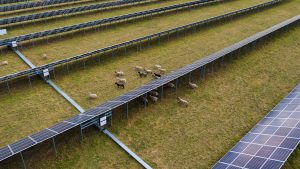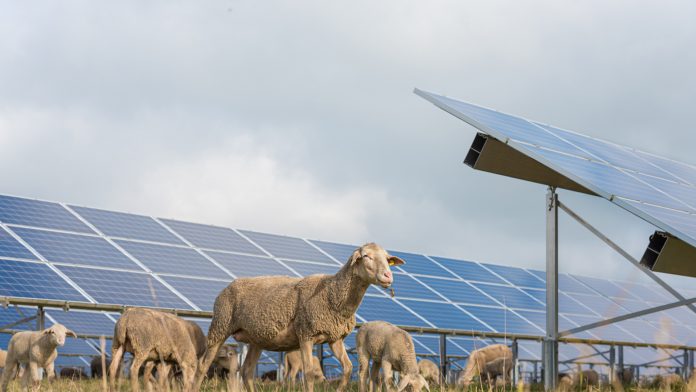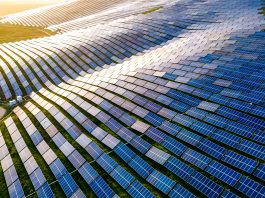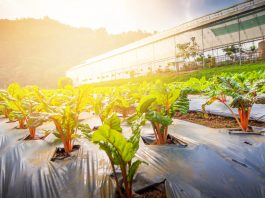Researchers from the University of Illinois have identified challenges and possible solutions to the uptake of agrivoltaics.
The uptake of renewable energy technologies, such as wind turbines and solar panels, is increasing due to the global energy transition. However, there are sometimes barriers to implementation caused by local resistance, as these vital technologies take up valuable space that could otherwise be used for agricultural production. Agrivoltaics, which provides a way to create dual land usage by combing solar panels with crops or grazing animals in the same field, is a potential way to bypass this issue. However, this emerging technology faces regulatory challenges as the land will no longer be classified as agricultural.
To identify possible solutions to this key issue, researchers from the College of Agricultural, Consumer and Environmental Sciences (ACES) at the University of Illinois have presented an overview of zoning and taxation regulations that affect agrivoltaics across the United States.
The study, ‘Emerging agrivoltaic regulatory systems: A review of solar grazing,’ is published in the Chicago-Kent Journal of Environmental and Energy Law.
Benefits of agrivoltaics
“There are many benefits to co-locating solar panels and agriculture on the same plot of land. There is an increased need for renewable energy, while agricultural land continues to decrease.
“When you’re able to find a technology where you can put these uses together, you may reduce the overall potential that either technology could have on its own, but you still get a better total outcome. It can also be a very good financial diversification for the farmer,” said Tyler Swanson, of the Department of Agricultural and Consumer Economics (ACE) at U of I and one of the study’s authors.
The researchers focused on the regulations around solar panels and grazing because it is a more established practice. It can be hard for crops to thrive under solar panels, but for grazing animals, especially sheep, the combination works well as the sheep graze around the solar panels, providing needed vegetation maintenance.

“The sheep don’t really care about hanging wires or poles. As far as I know, there’s never been an issue where the sheep have caused structural damage to the solar panels. They mostly just go around, eat the grass, sleep, and lay under the panels during the day when it’s hot outside. They save the solar developer money, because there is no longer a need to hire a mowing company to trim the vegetation,” Swanson said.
Barriers to implementing the emerging technology
The researchers identified zoning and taxation regulations across the US and found that agrivoltaics installation usually caused the area to be declassified as agricultural land. This results in added regulatory burdens, higher taxes, and sometimes fiscal penalties for violating zoning ordinances. This was further complicated by the differences between state and local policies.
“Even if states are promoting policies supportive of the nexus of agriculture and renewable energy, there will often be local pushback,” stated co-author Jessica Guarino, a postdoctoral research associate at ACE.
“Especially in rural areas, there can be a lot of opposition to bringing in new technology on agricultural land, which is highly valued. For the farmers working on that land, it’s usually a generational thing, so they are emotionally invested as well. That kind of social tension evolves into legal challenges for agrivoltaics.”
The researchers hope that their study will help policies shift to incentivise agrivoltaics production and provide tax incentives rather than tax penalties for dual land usage.
Legal issues affecting implementation
Legal issues affecting agrivoltaics implementation were also identified by the team, namely the contractual agreements between farmers and solar panel developers. Usually, a solar developer enters a contract with a farmer which allows for sheep to be brought to the solar panel facility. Occasionally, solar panels are installed on existing farmland, and the farmer provides vegetation management through grazing. In both cases, the farmer and solar panel developer must ensure that their property is protected.
“You have a solar developer who has a multimillion-dollar energy generation facility, and they want to make sure the sheep aren’t going to cause any damage to it. But you also have a farmer who has thousands of dollars or more in sheep, and they want to protect those as well,” Swanson explained.
“Generally, insurance costs will be high, as you need to hedge against damage to the solar farm, as well as potential harm to the sheep. There’s also the added cost of driving back and forth from the solar farms for the farmer, depending on how far away it is.”
The team comprised a couple of sample contracts in their paper, including one from the American Solar Grazing Association, a trade group that assists sheep farmers in negotiating with a solar development company.









